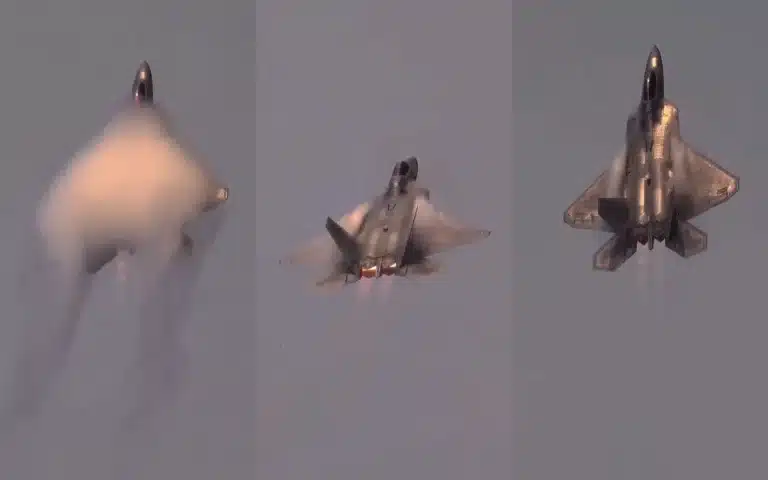Although the footage of a fighter plane that appears to be “activating its cloaking device” is reminiscent of an action movie, it is real.
Photographer and videographer Mark Fingar has posted footage online that shows the moment an F-22 Raptor is about to breach the sound barrier before it is covered by what has been referred to as its “cloaking device.”
When the F-22 was designed for the US Air Force, it was undoubtedly one of the most sophisticated fighter jets ever made.
After six years of development, the F-22 made its first flight in Georgia, US, in 1997. However, a former chief of staff of the Air Force stated in 2021 that he thought the aircraft would be completely decommissioned by the end of the decade.
But now, the FAA has made the decision to modernize the aircraft, perhaps extending their lifespan into the 2030s.
At 1,500 mph, or 2.2 times the speed of sound, the jets may reach high speeds. Additionally, they can burn about 5,000 pounds of fuel every hour. But in spite of appearances, the plane is not outfitted with a “cloaking device.”
Instead, just before it exceeds the sound barrier, the plane produces what’s known as a vapor cone, which some people have online compared to a “cloaking device” with some degree of accuracy.
One of the planes can be seen in Fingar’s video getting swallowed by a mist cone, making it impossible to view with the unaided eye.
When the footage was released online, social media users were shocked. One individual tweeted the video along with the statement, “Mark Fingar captured an F-22 Raptor activating its cloaking device.”
Meanwhile, someone else compared it to something out of a Harry Potter movie.
Another joker said, “It’s how they play peekaboo in the clouds.”
Condensed water can occasionally form around an object traveling quickly through wet air, resulting in vapor cones.
When localized air pressure around an object like an F-22 Raptor drops, so does the temperature. Then, if the temperature drops below saturation temperature (the temperature for a corresponding saturation pressure at which a liquid boils into its vapor phase), a cloud will form.
A shockwave can also be brought on by a temperature shift.
Rod Irvine, the chairman of the Royal Aeronautical Society’s aerodynamics group, explained to the BBC: “If you see a vapor cone, you’ve got a shockwave, because you’ve got a change in pressure and temperature.”
Irvine continued: “The aircraft isn’t necessarily travelling faster than the speed of sound, but the air travelling over the wing is accelerated and locally breaks the sound barrier.”
Though the science is fascinating, the biggest attraction is the way it appears.

